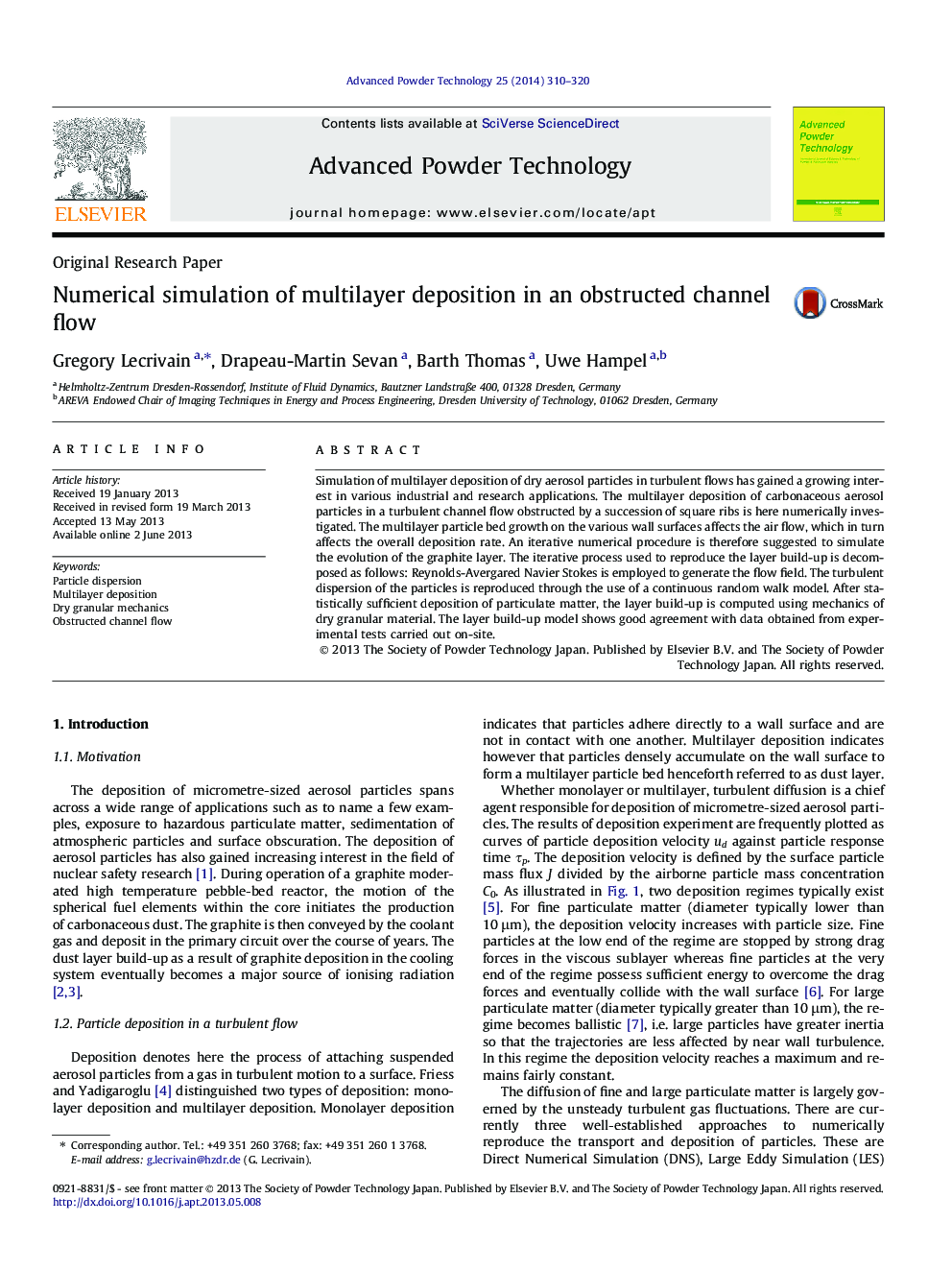| Article ID | Journal | Published Year | Pages | File Type |
|---|---|---|---|---|
| 144071 | Advanced Powder Technology | 2014 | 11 Pages |
•As a result of heavy deposition, the build-up of an aerosol particle bed is investigated numerically and experimentally.•Multilayer deposition of aerosol particles is carried out in a turbulent obstructed channel flow.•We developed a numerical model that reproduces the growth of the multilayer particle bed.•The numerical data are compared with experimental data obtained in our on-side wind tunnel and show reasonable agreement.
Simulation of multilayer deposition of dry aerosol particles in turbulent flows has gained a growing interest in various industrial and research applications. The multilayer deposition of carbonaceous aerosol particles in a turbulent channel flow obstructed by a succession of square ribs is here numerically investigated. The multilayer particle bed growth on the various wall surfaces affects the air flow, which in turn affects the overall deposition rate. An iterative numerical procedure is therefore suggested to simulate the evolution of the graphite layer. The iterative process used to reproduce the layer build-up is decomposed as follows: Reynolds-Avergared Navier Stokes is employed to generate the flow field. The turbulent dispersion of the particles is reproduced through the use of a continuous random walk model. After statistically sufficient deposition of particulate matter, the layer build-up is computed using mechanics of dry granular material. The layer build-up model shows good agreement with data obtained from experimental tests carried out on-site.
Graphical abstractFigure optionsDownload full-size imageDownload as PowerPoint slide
